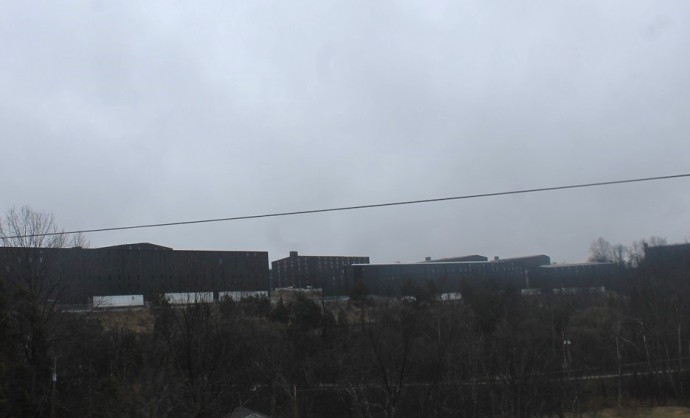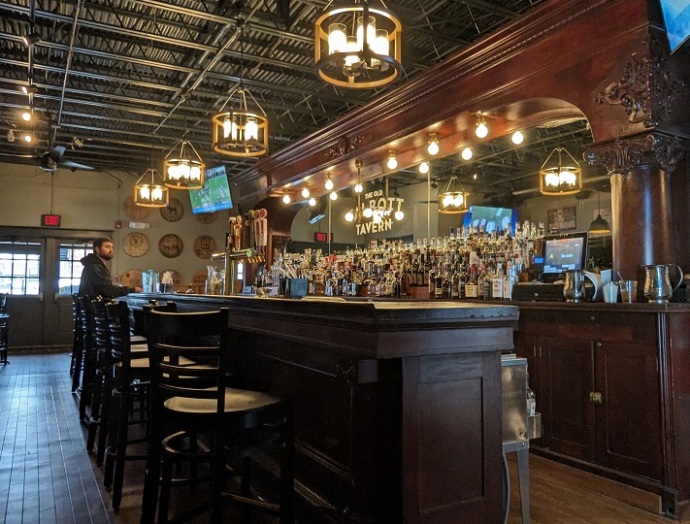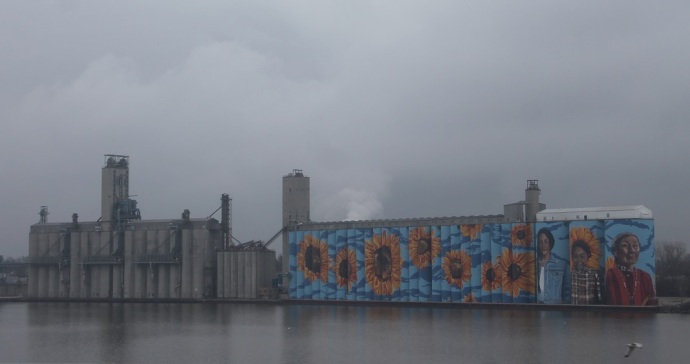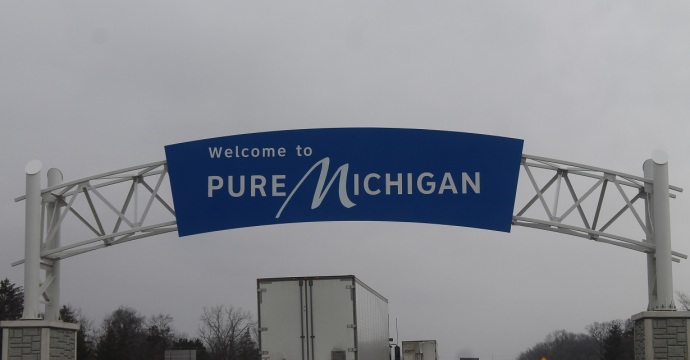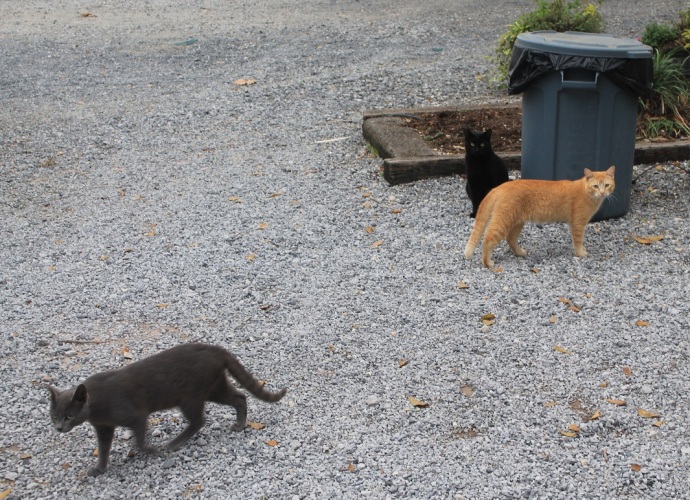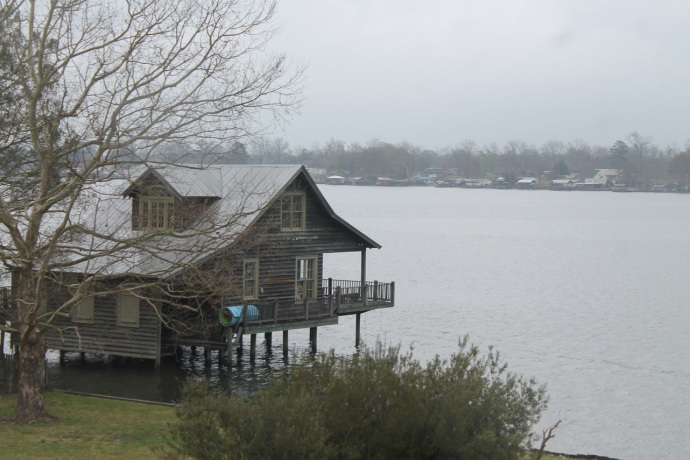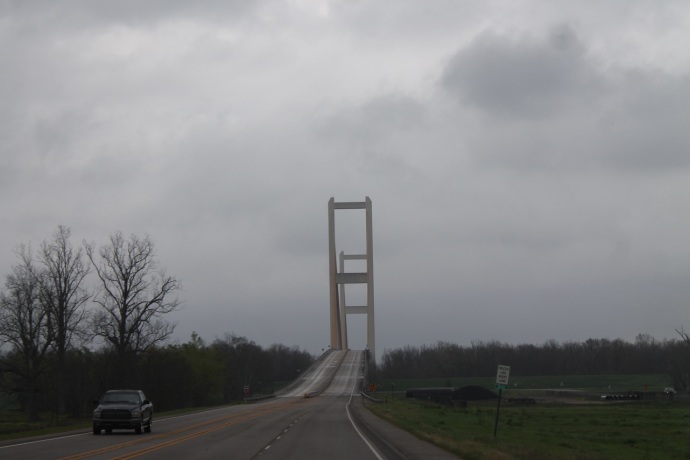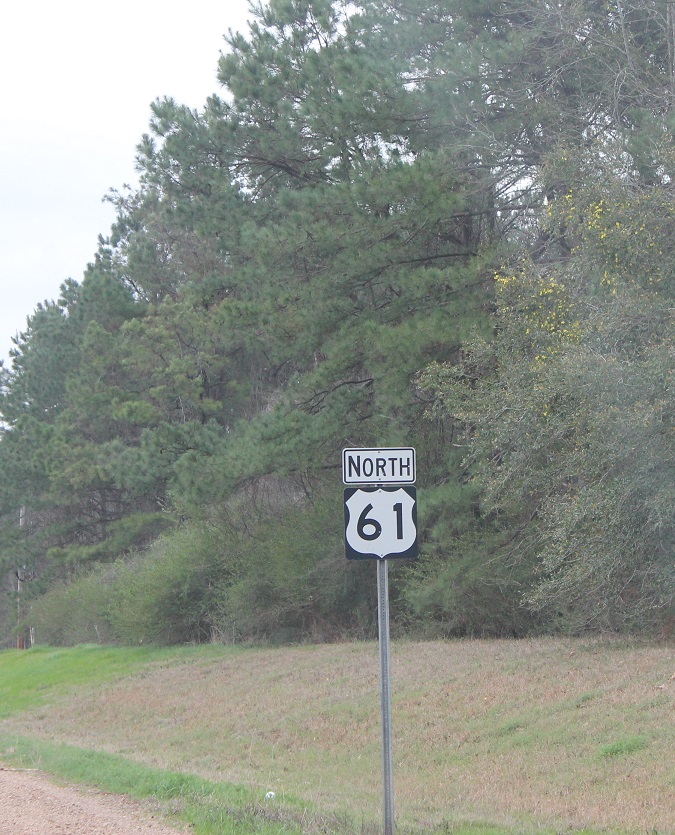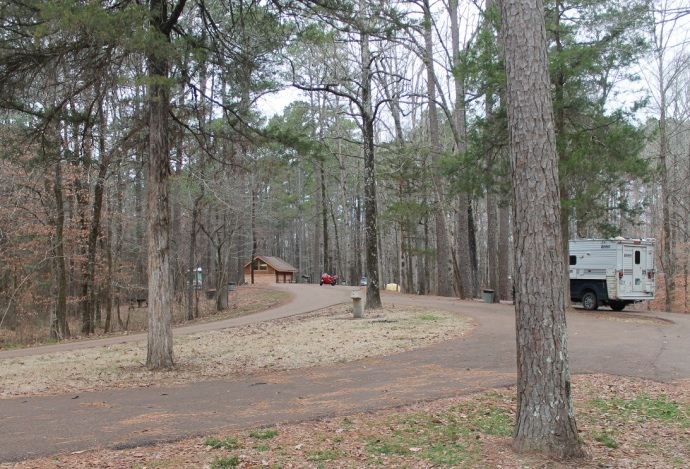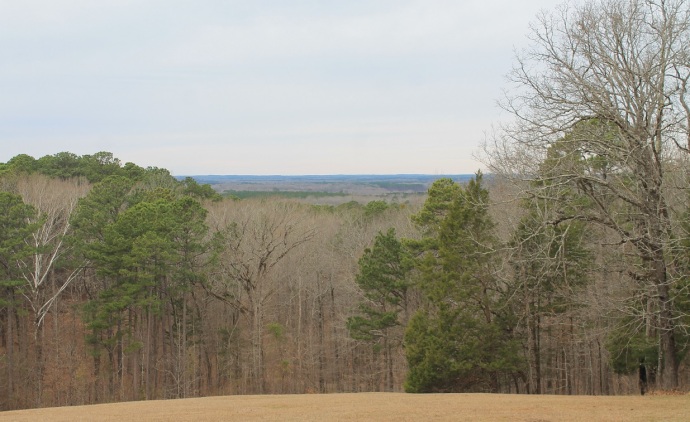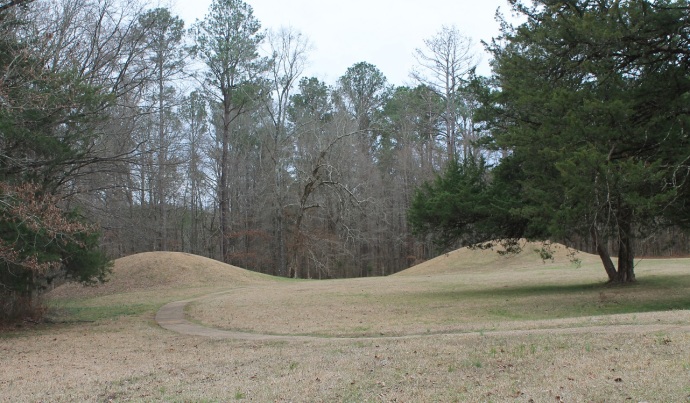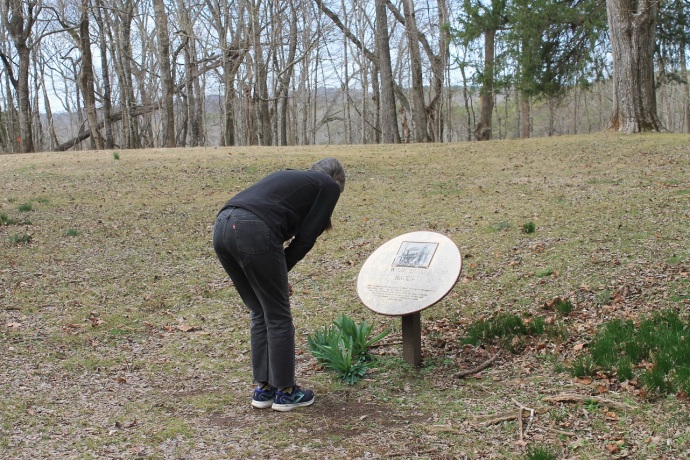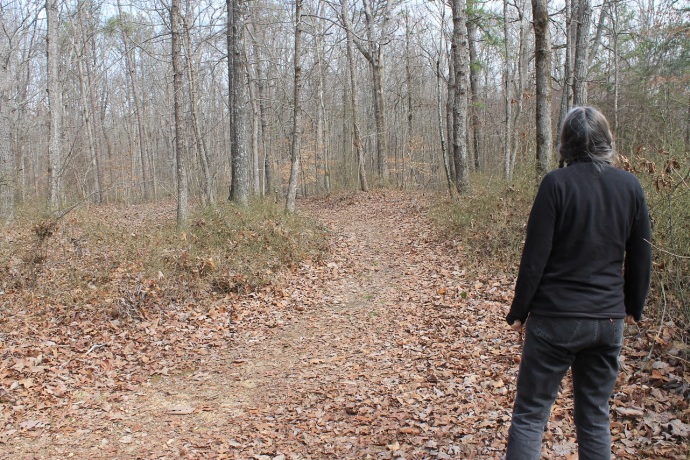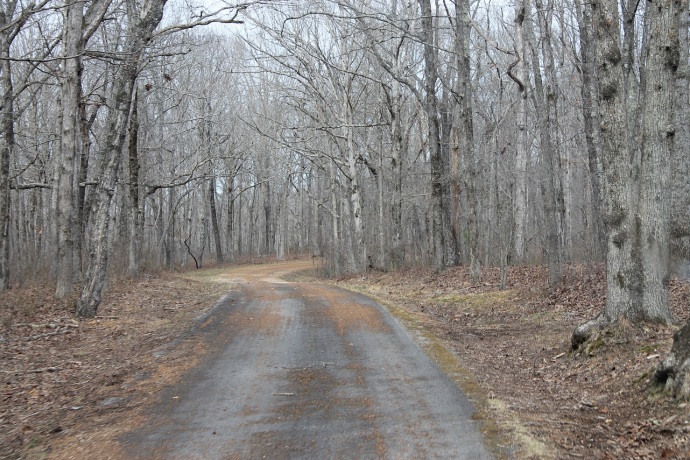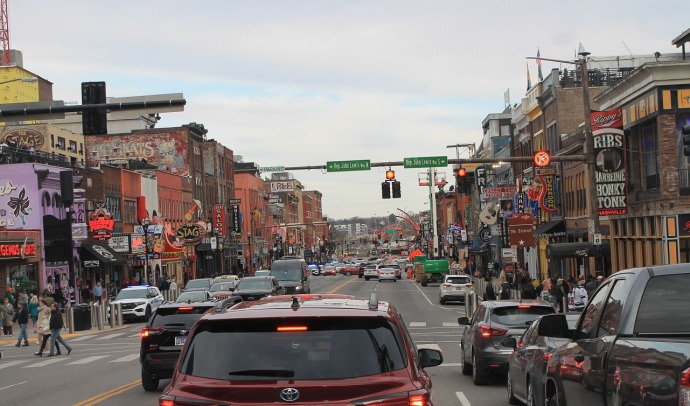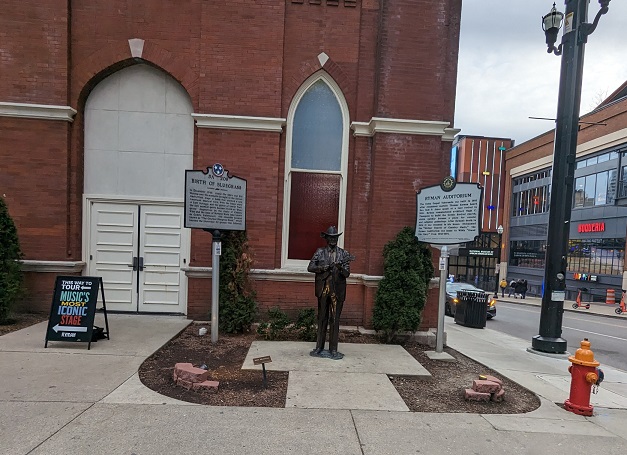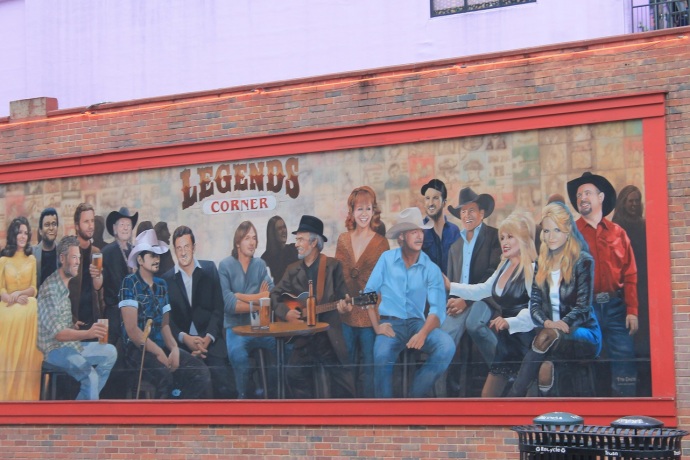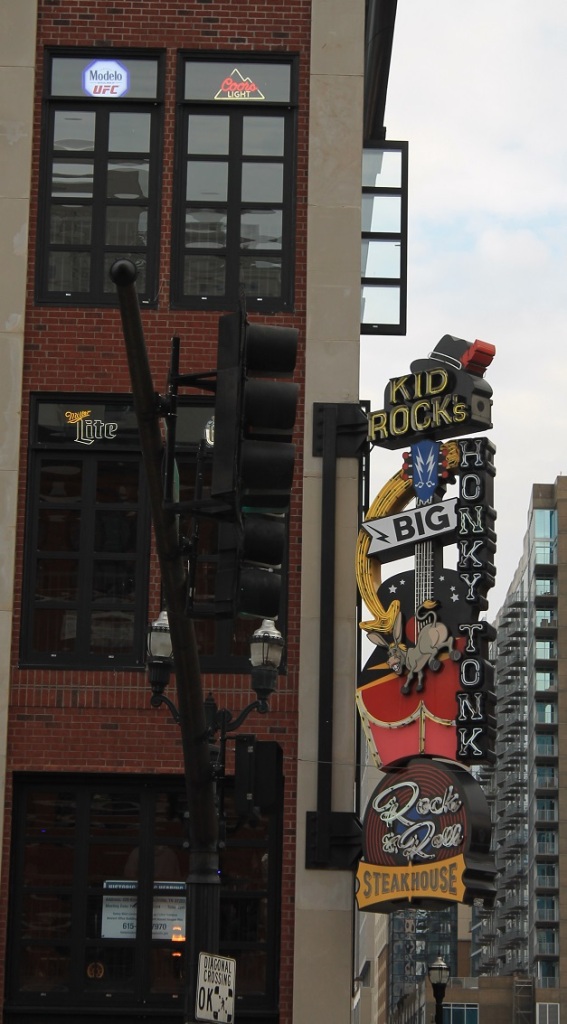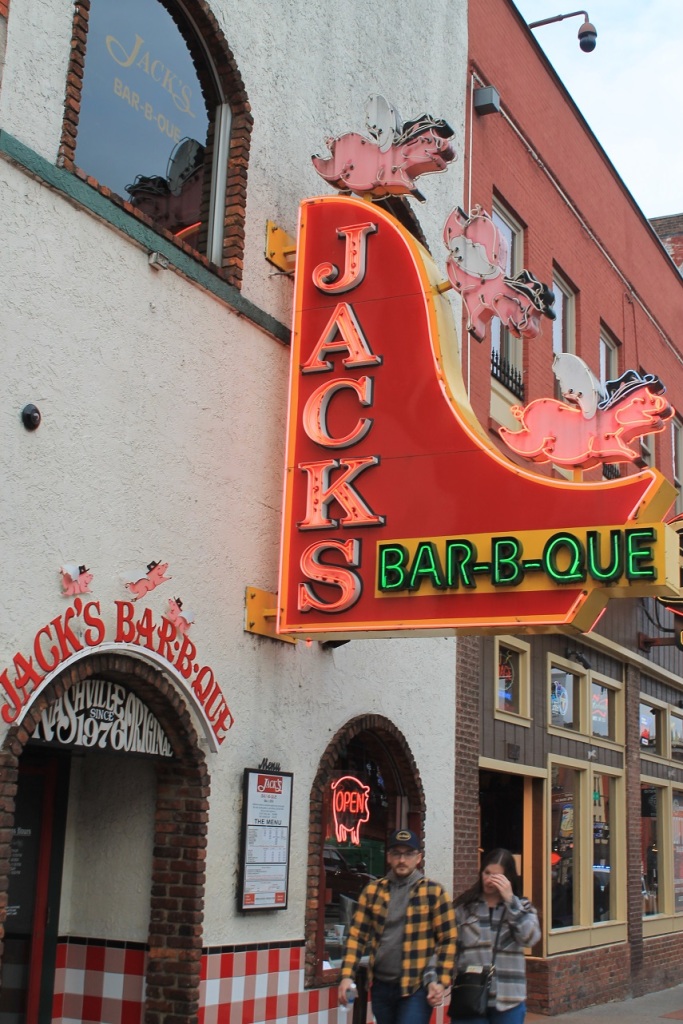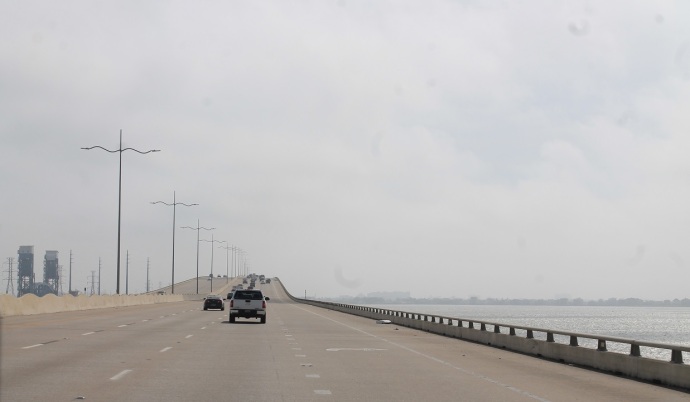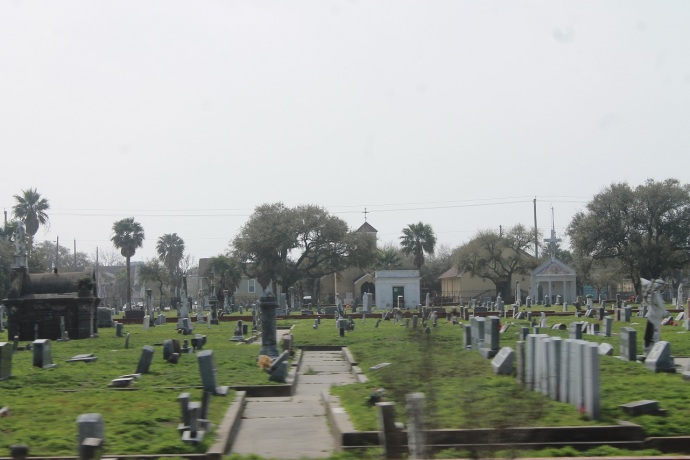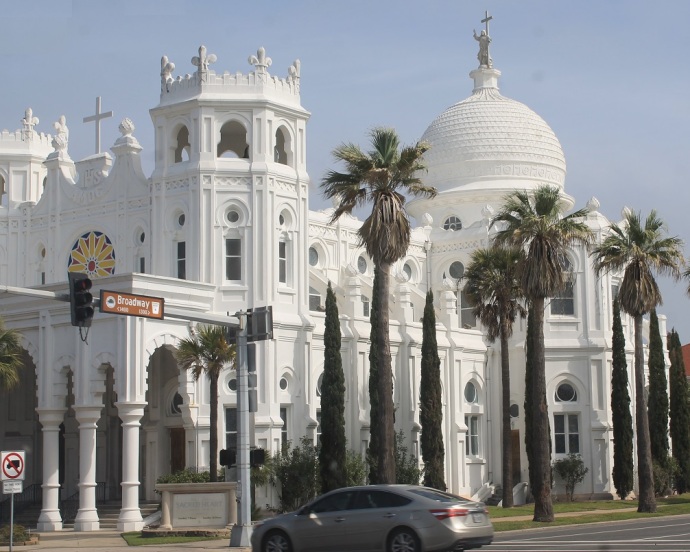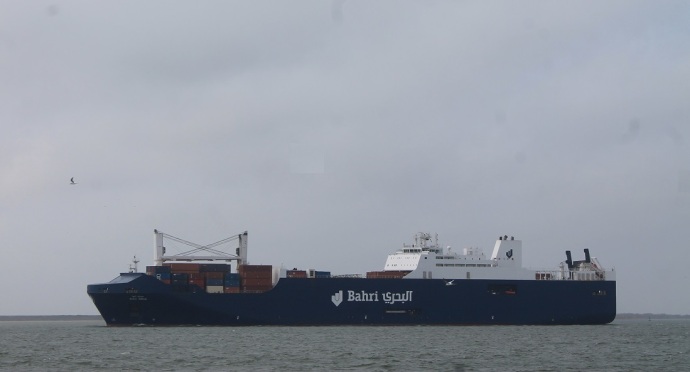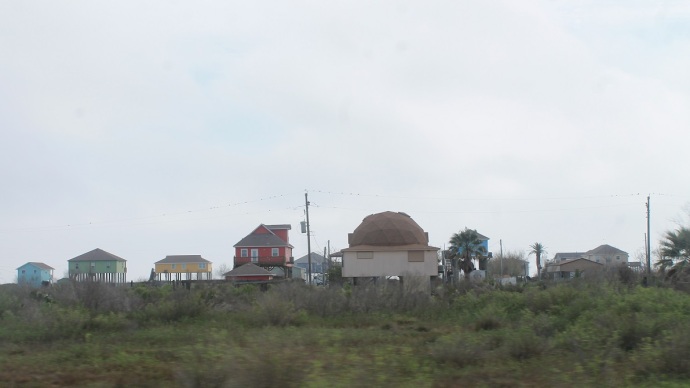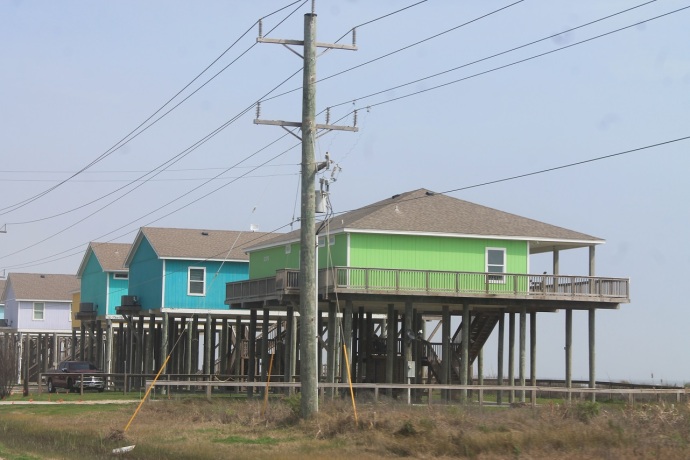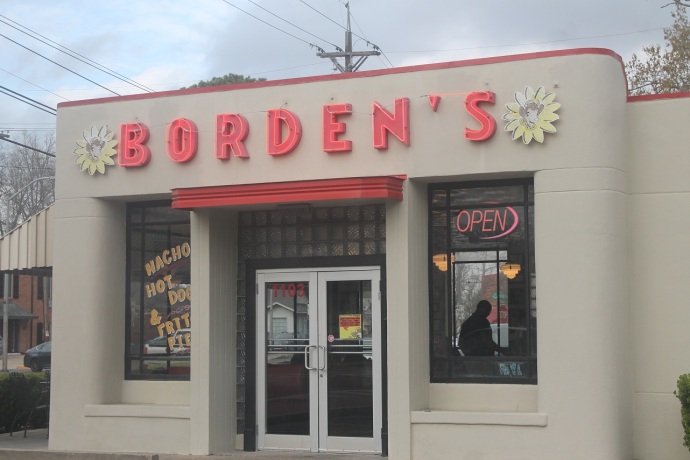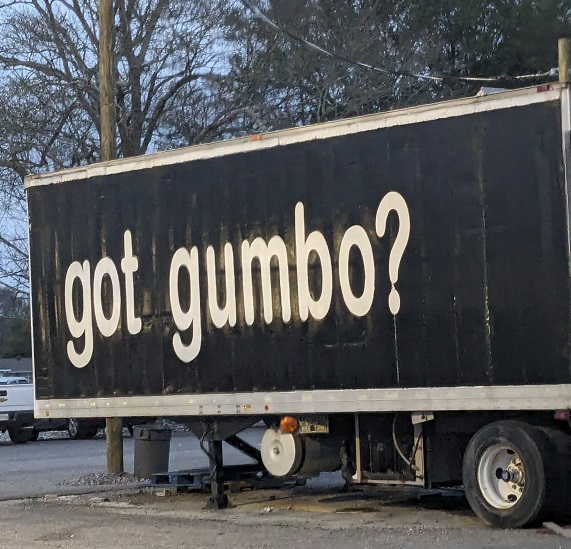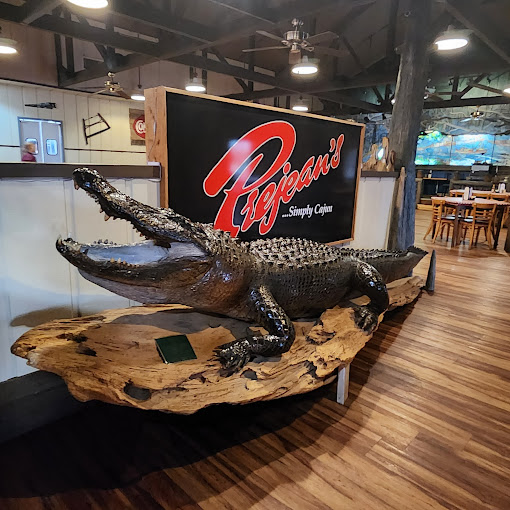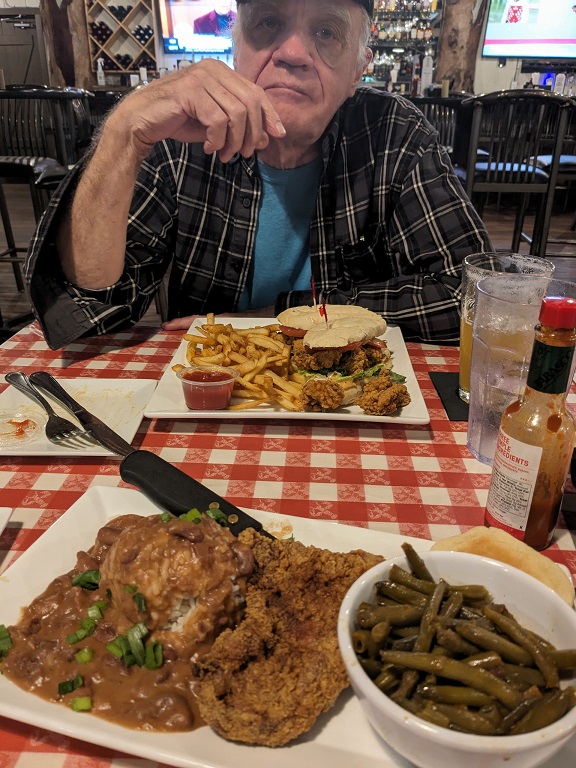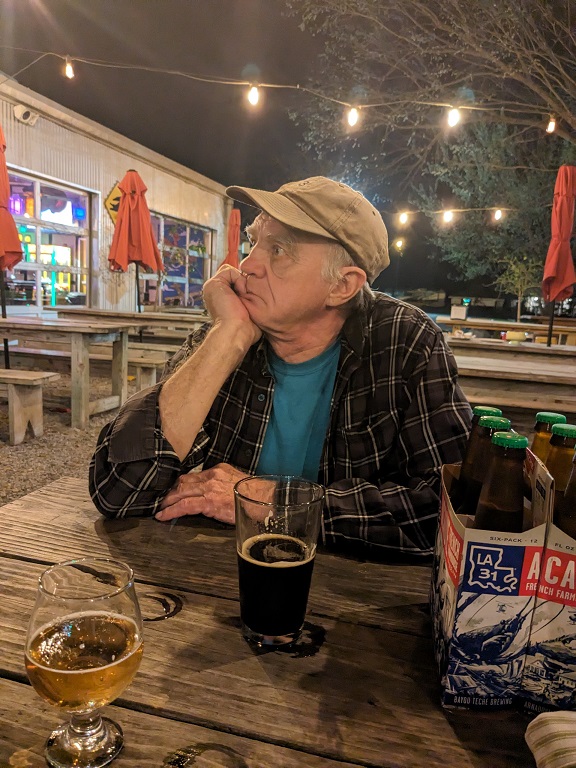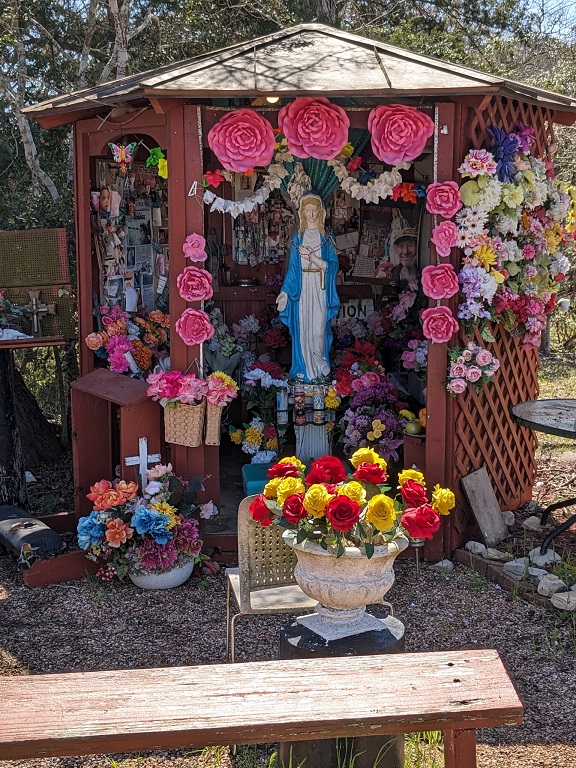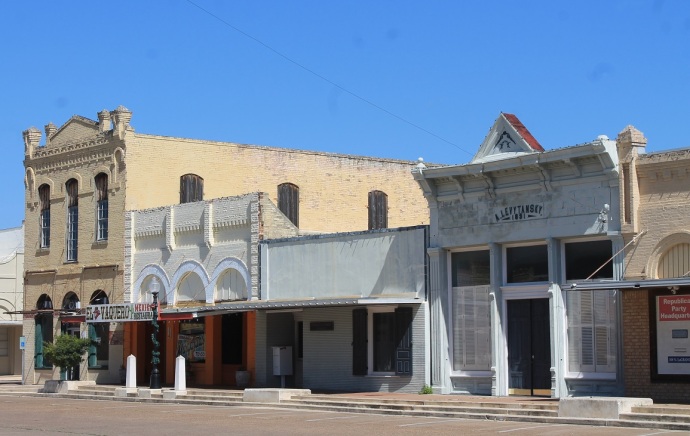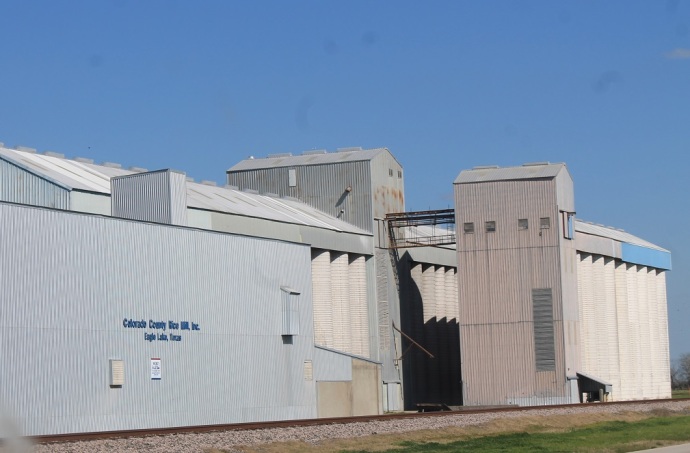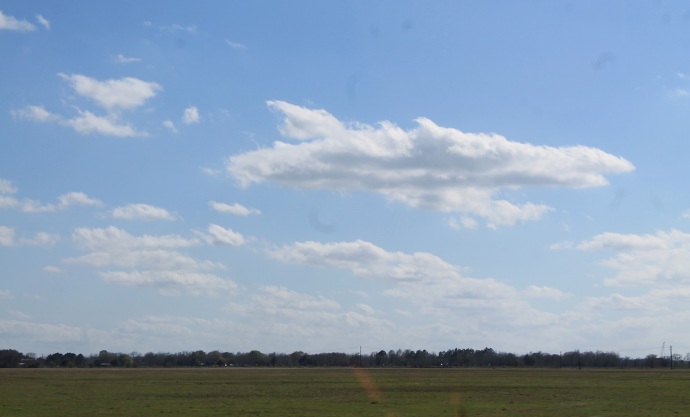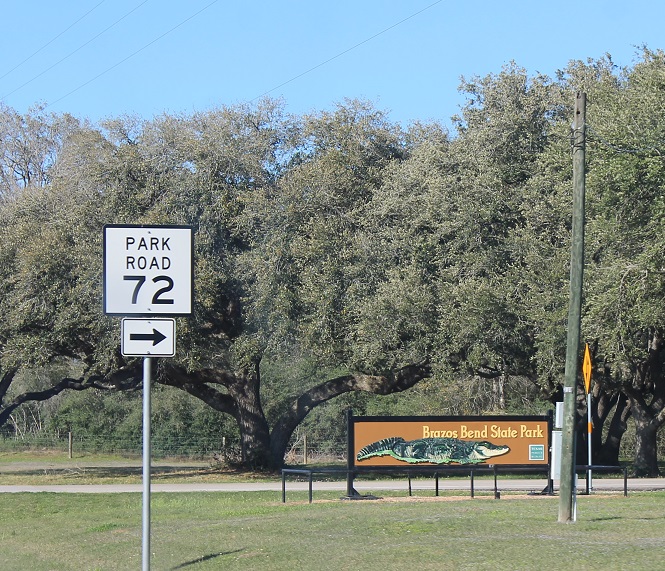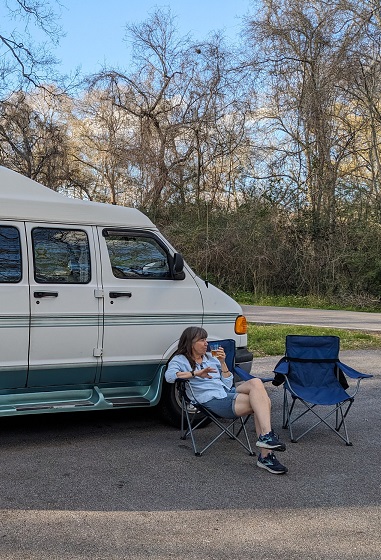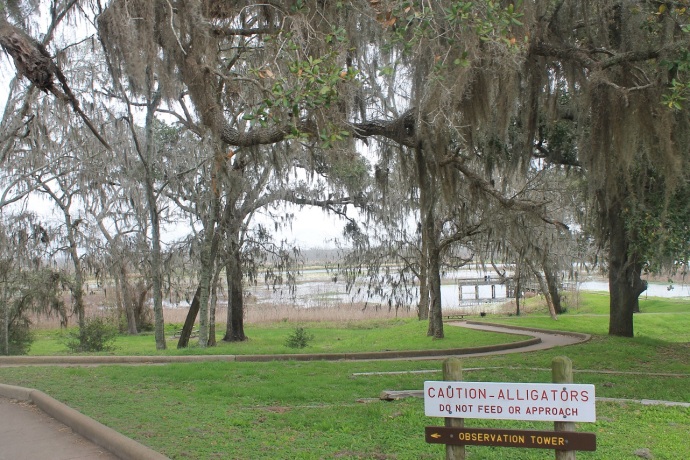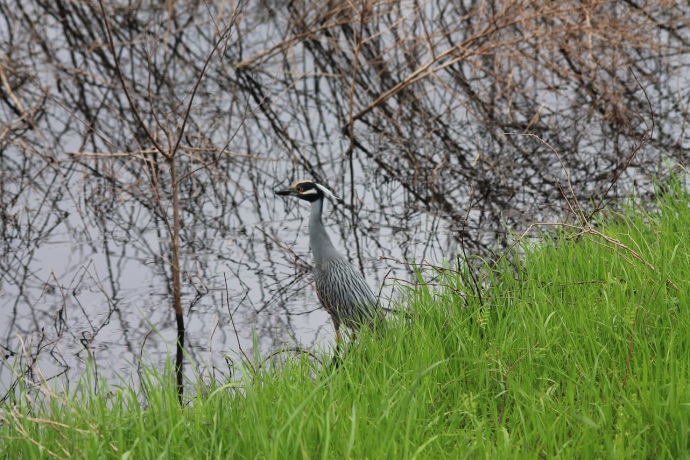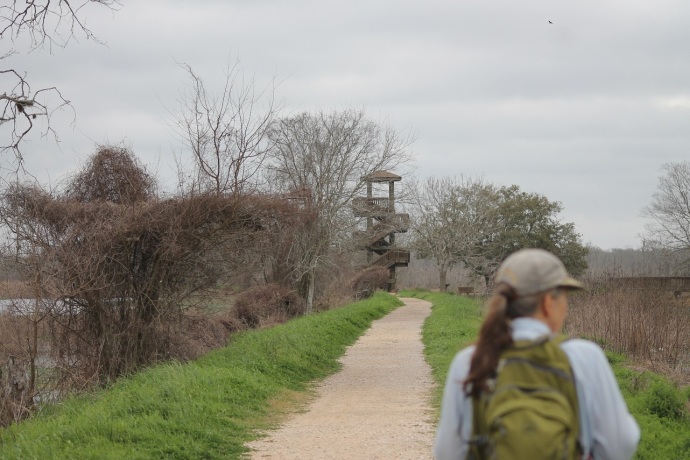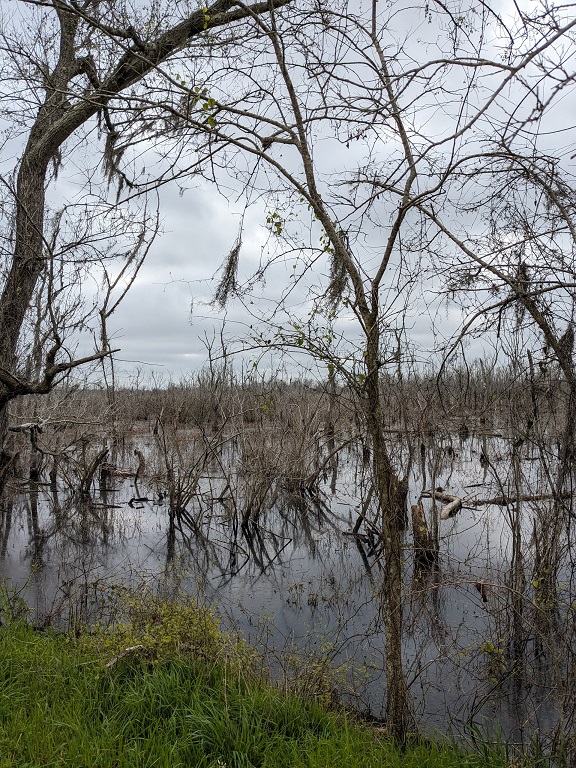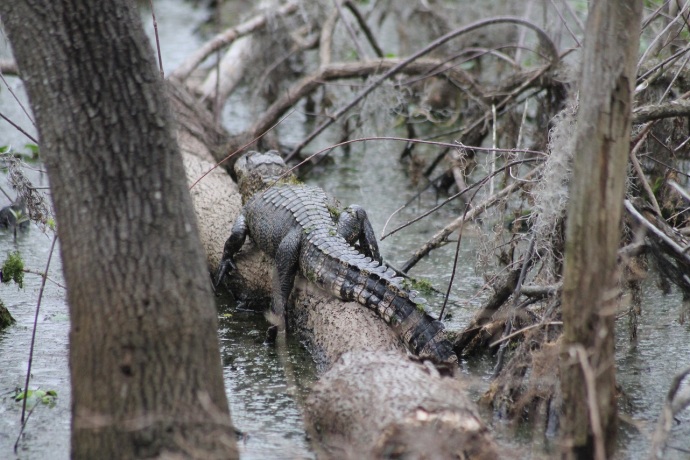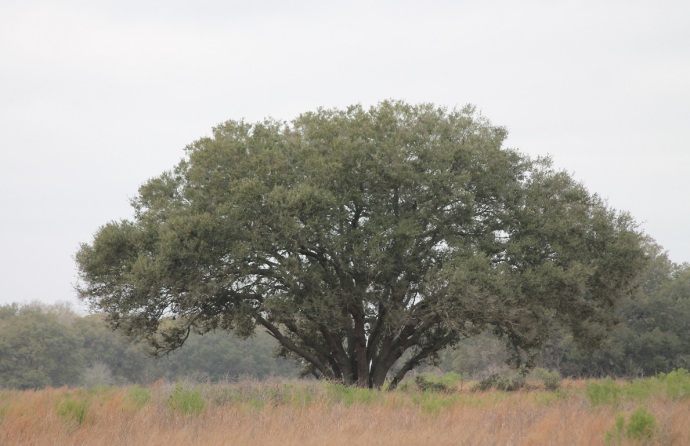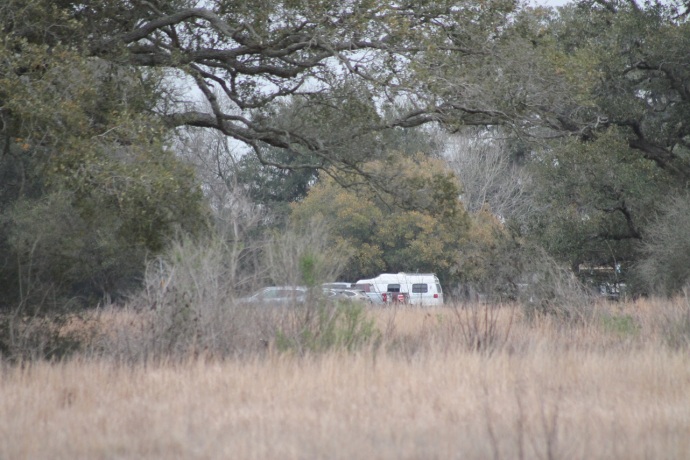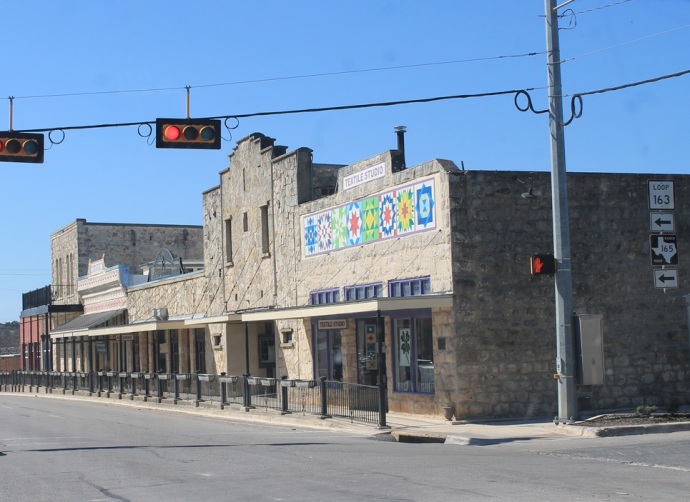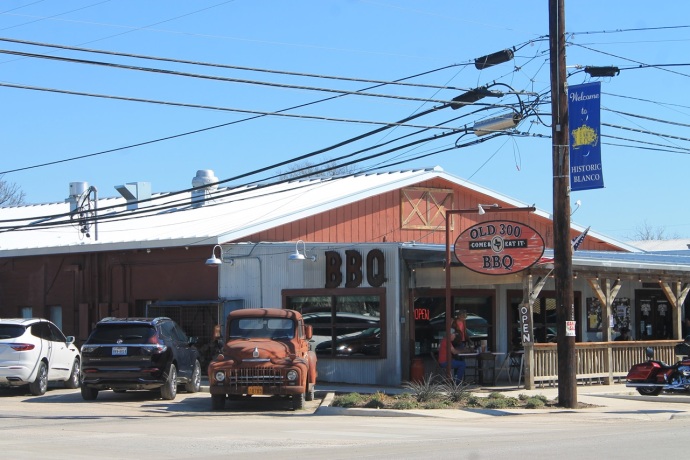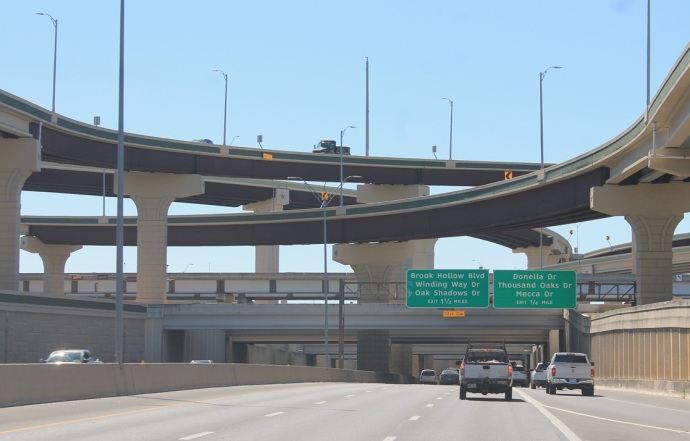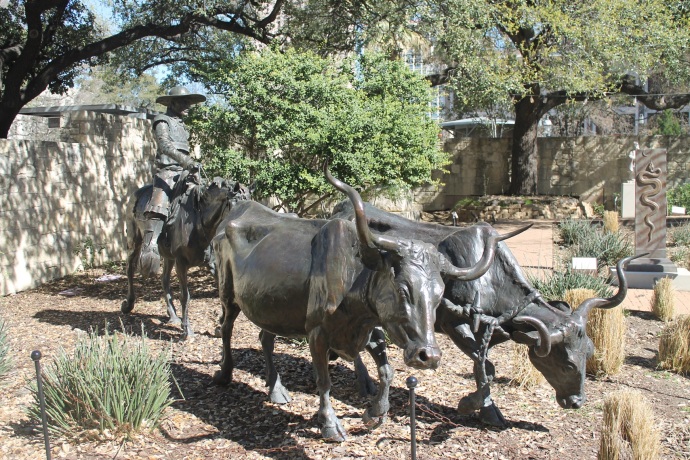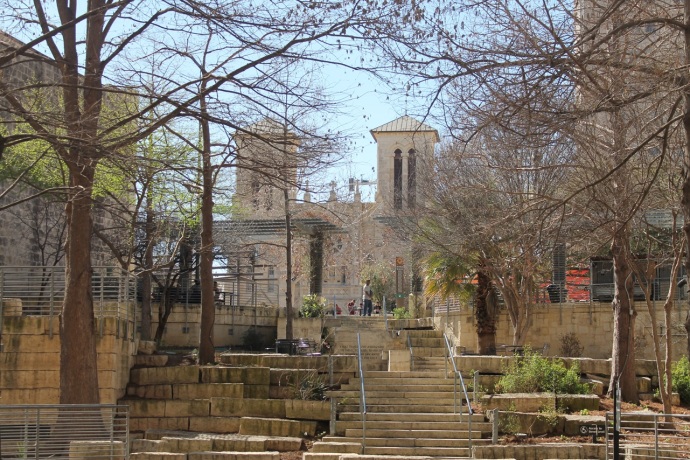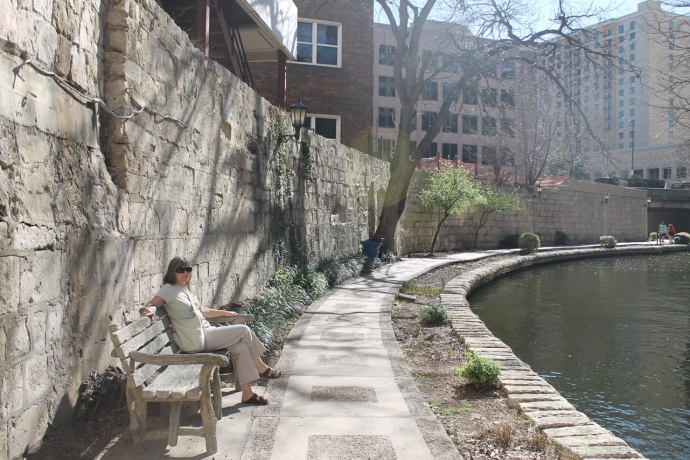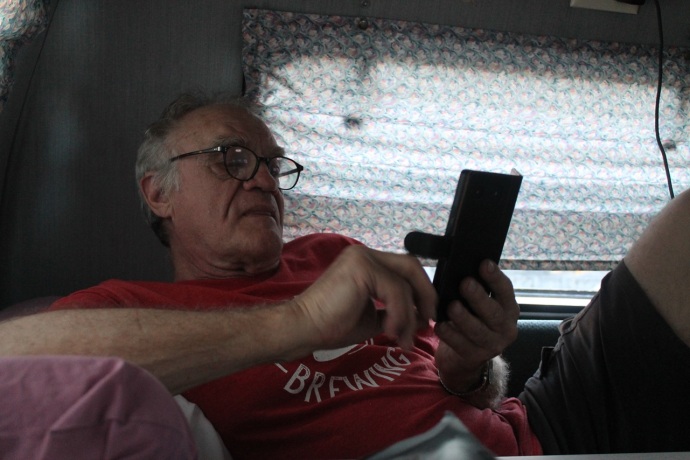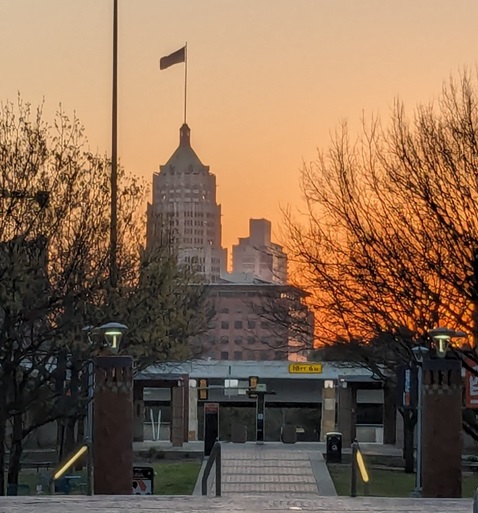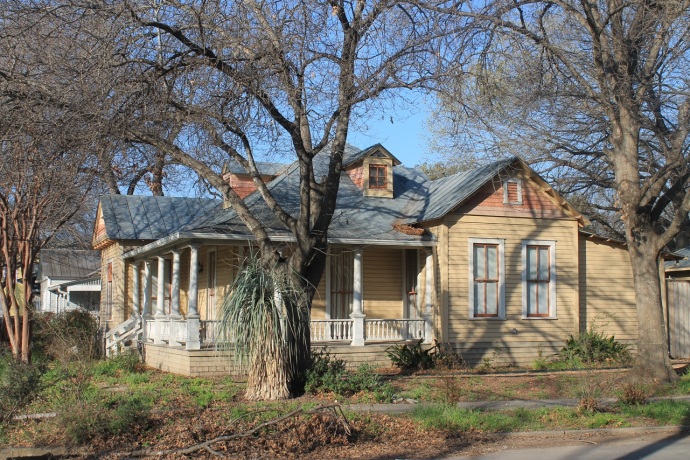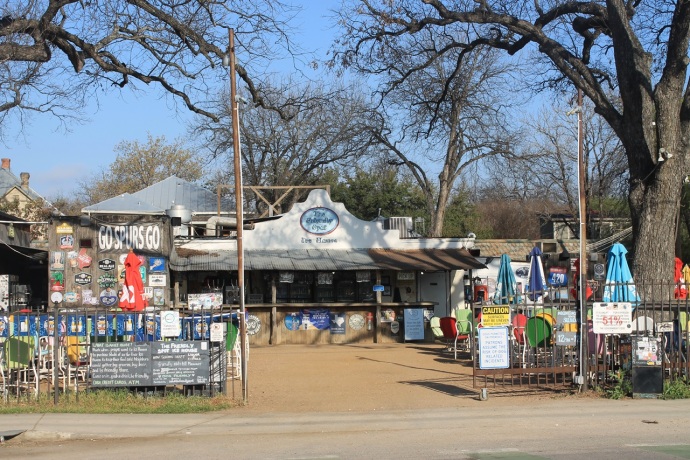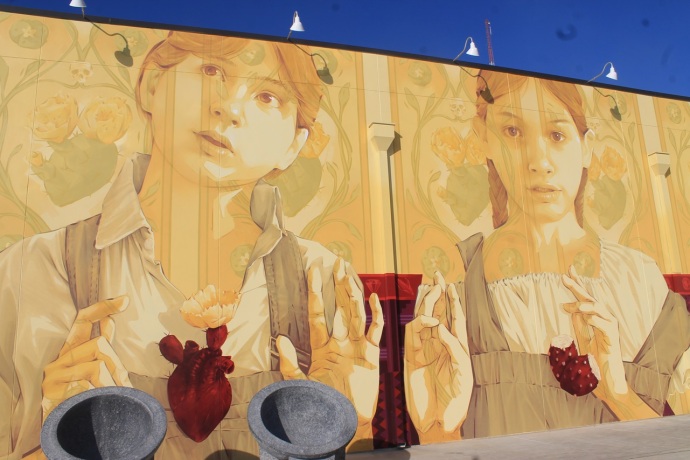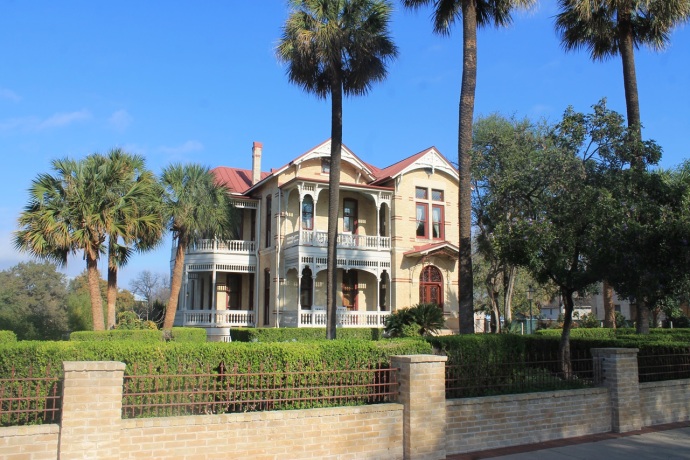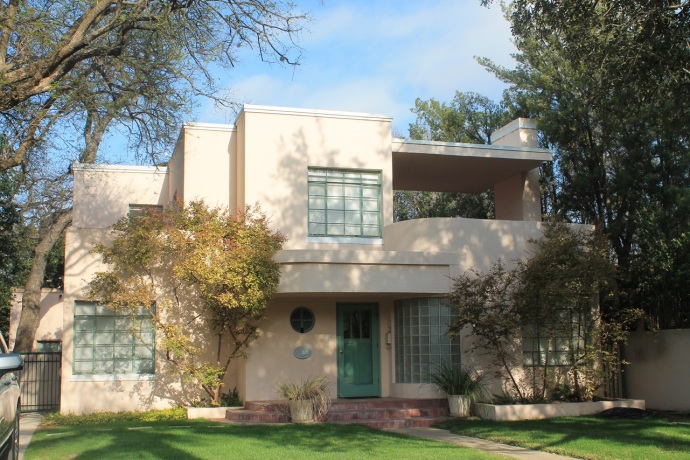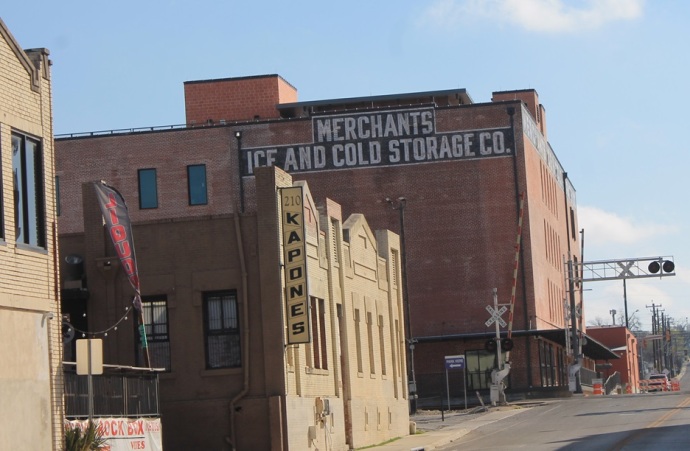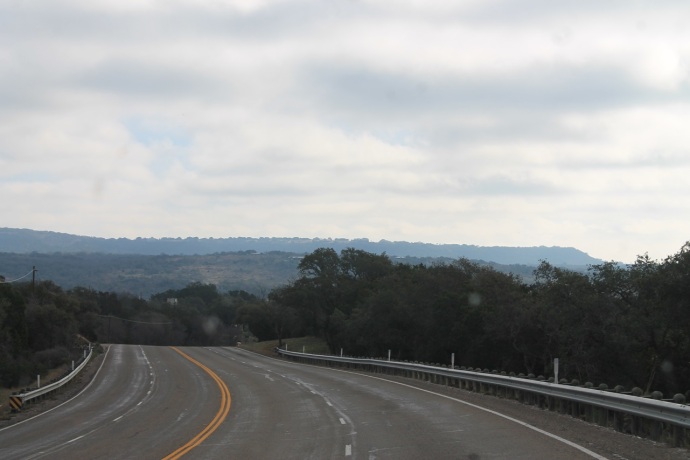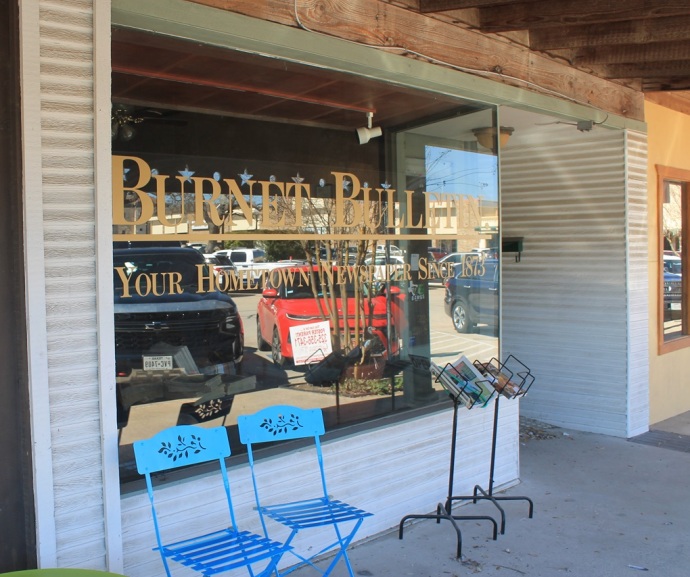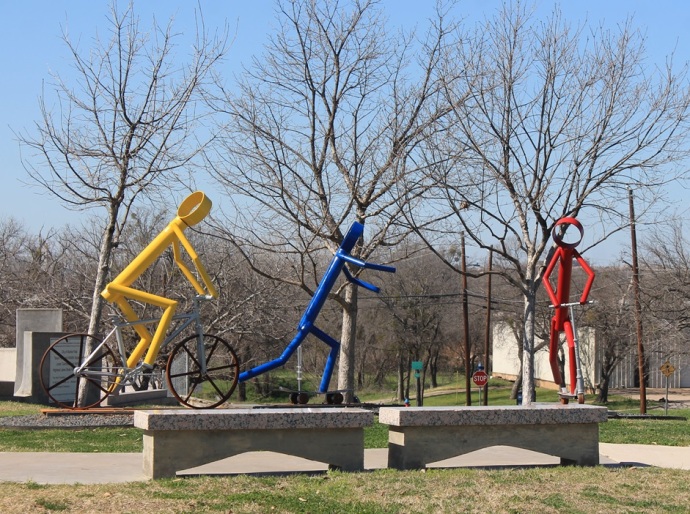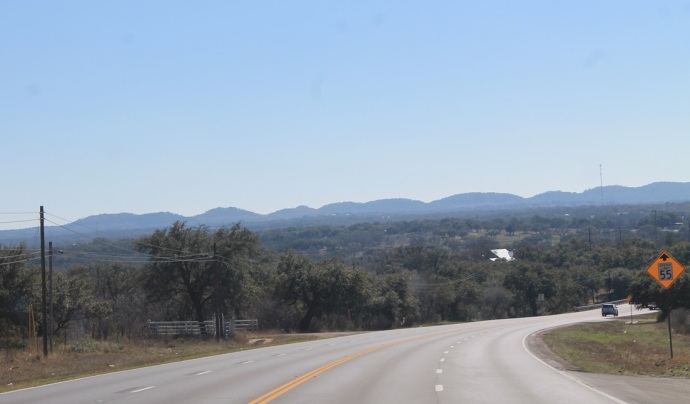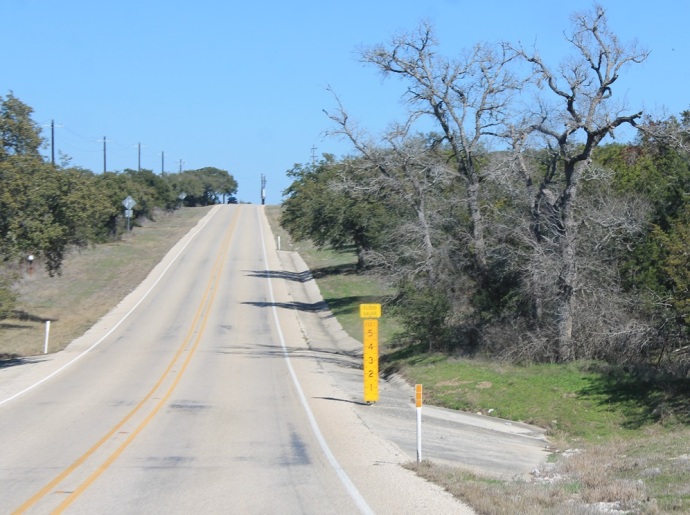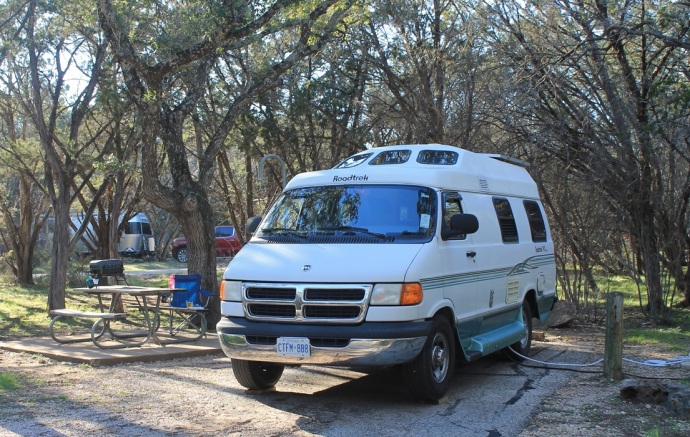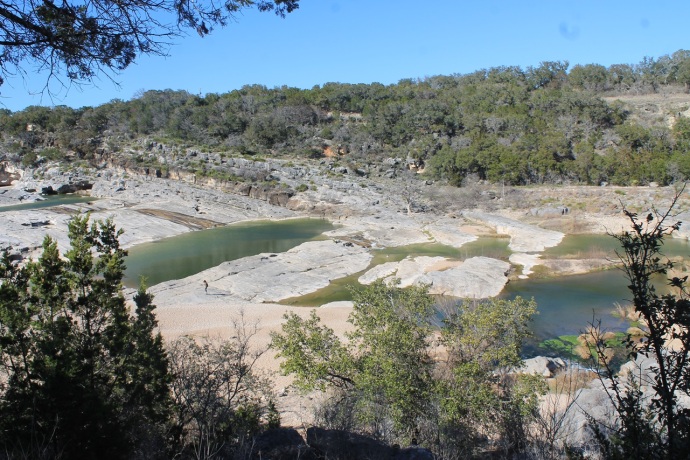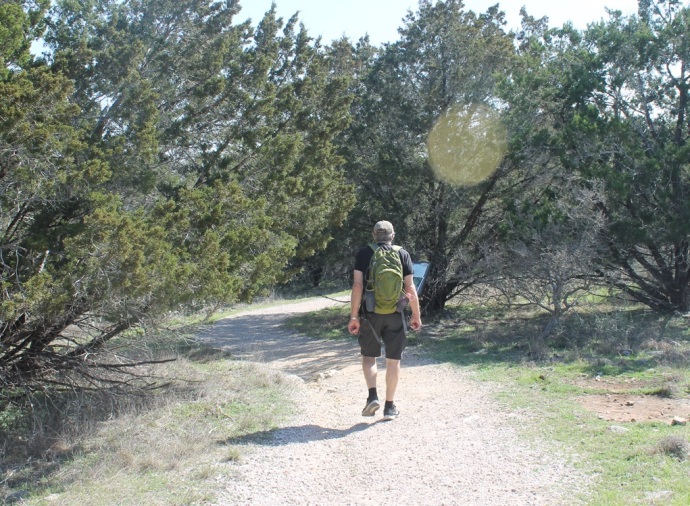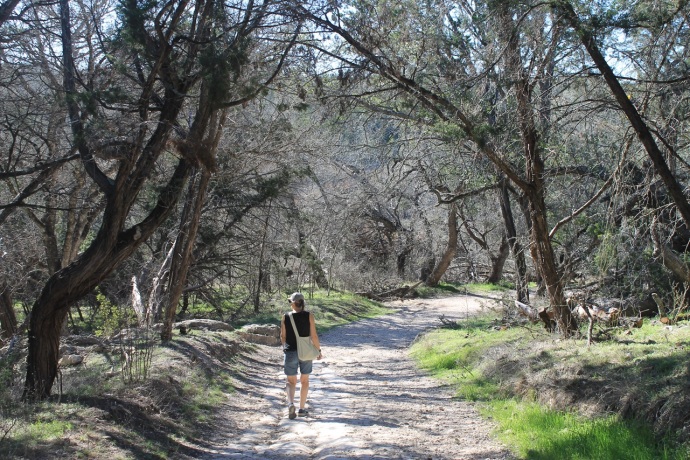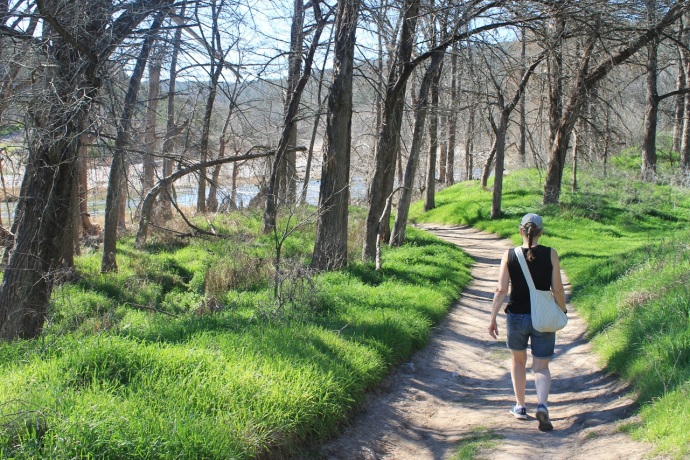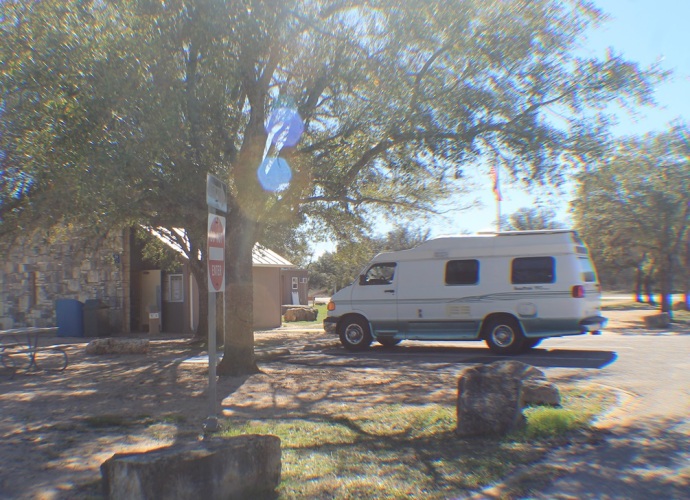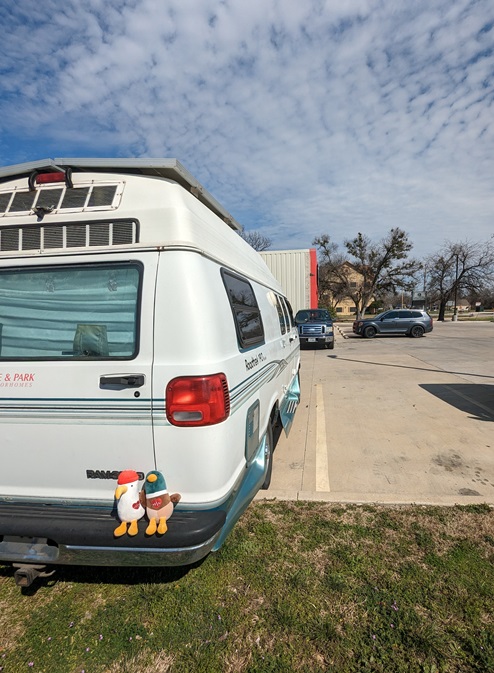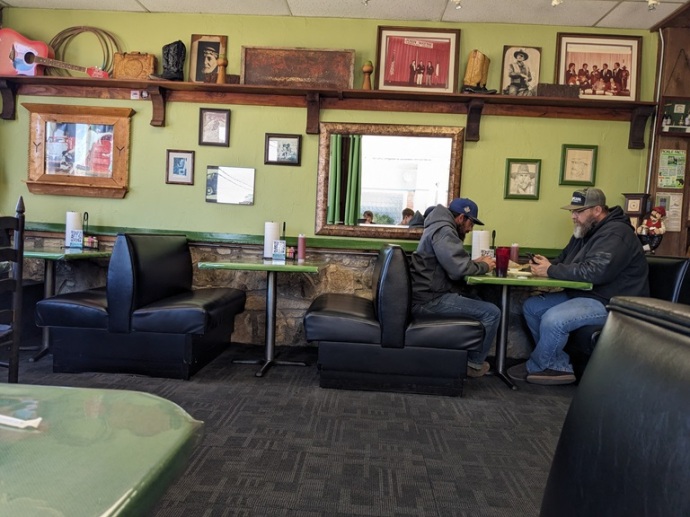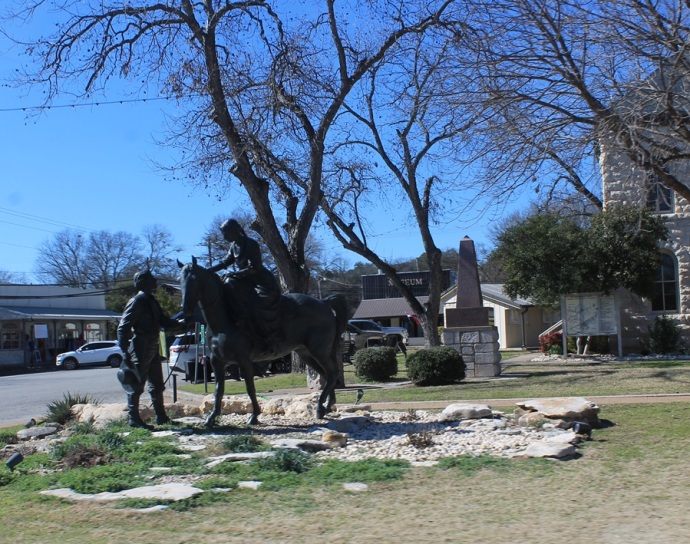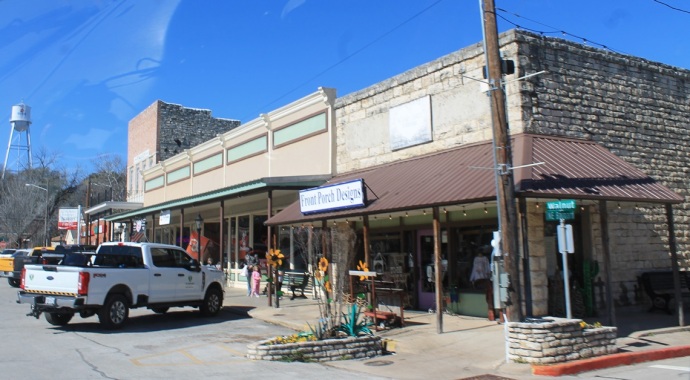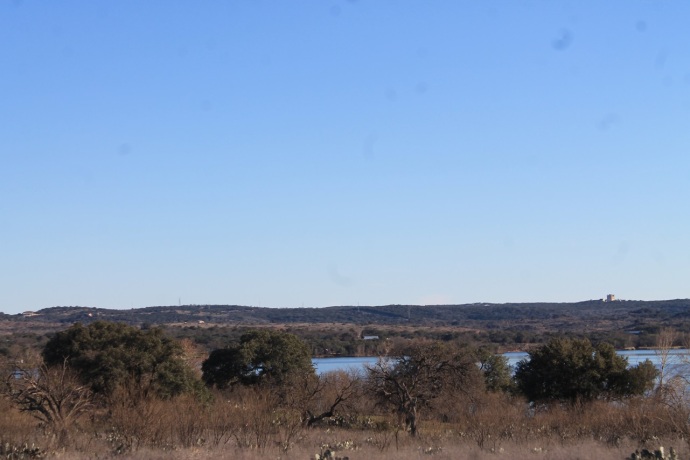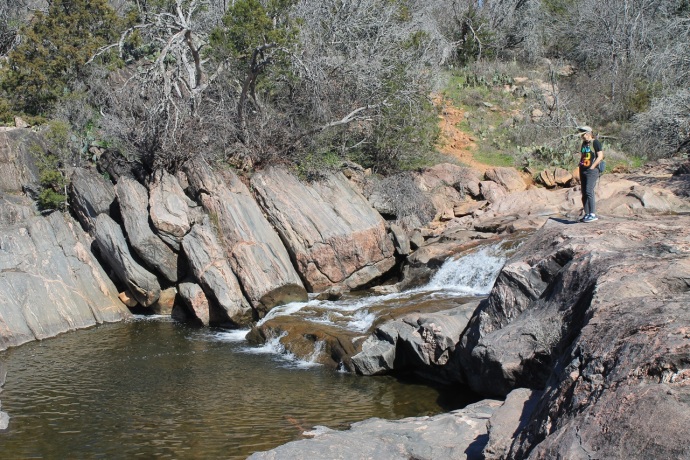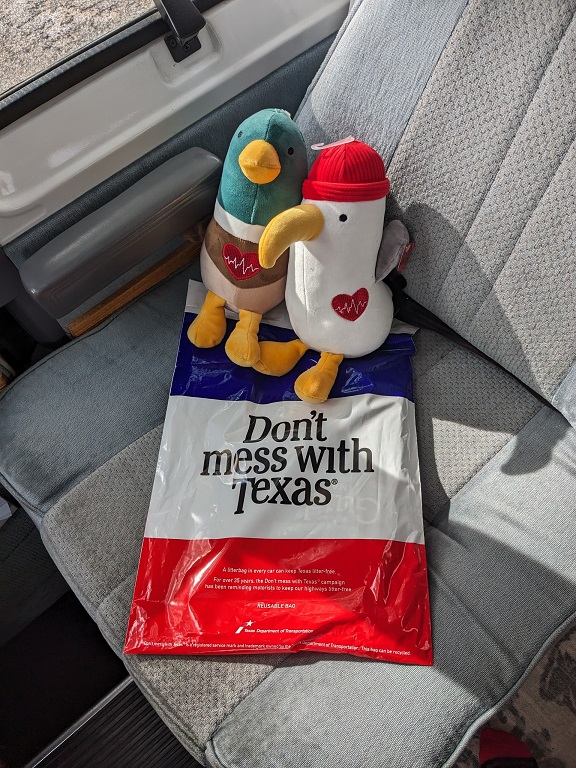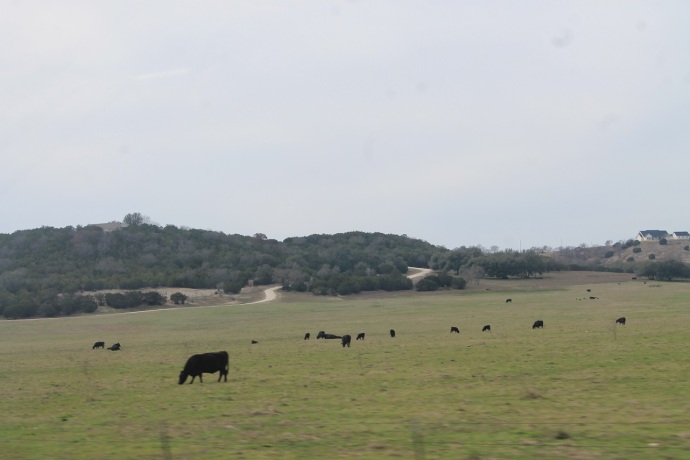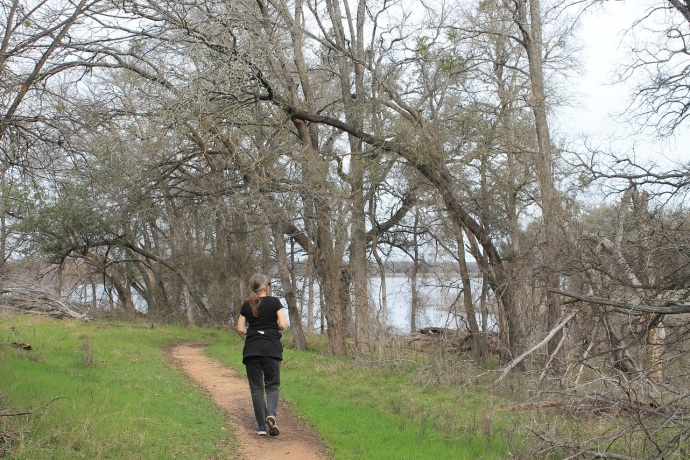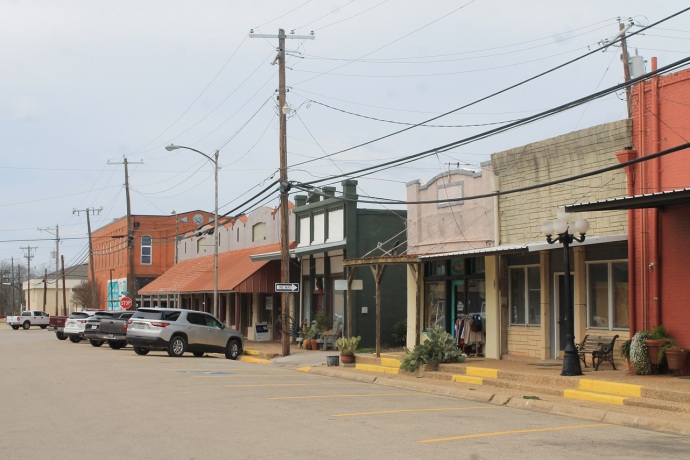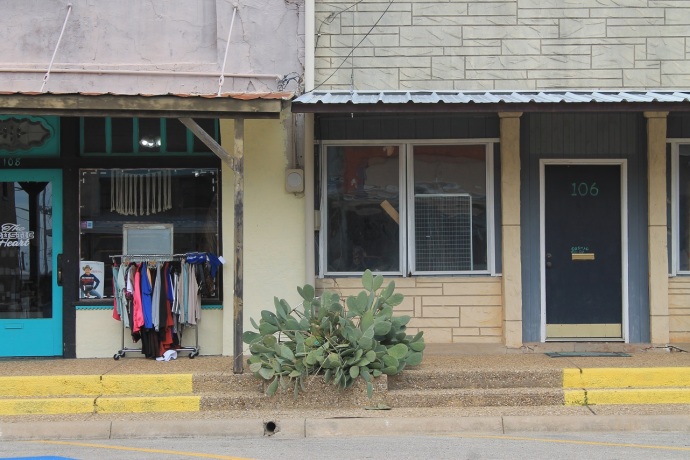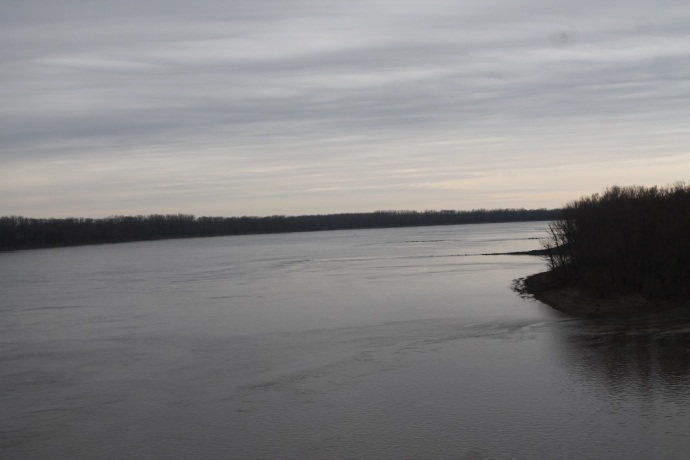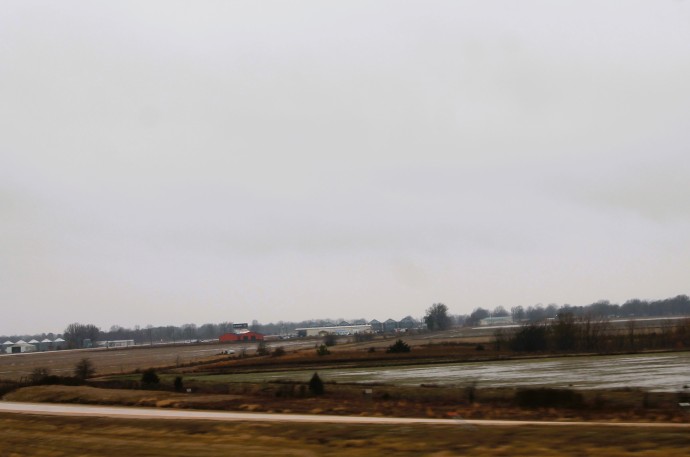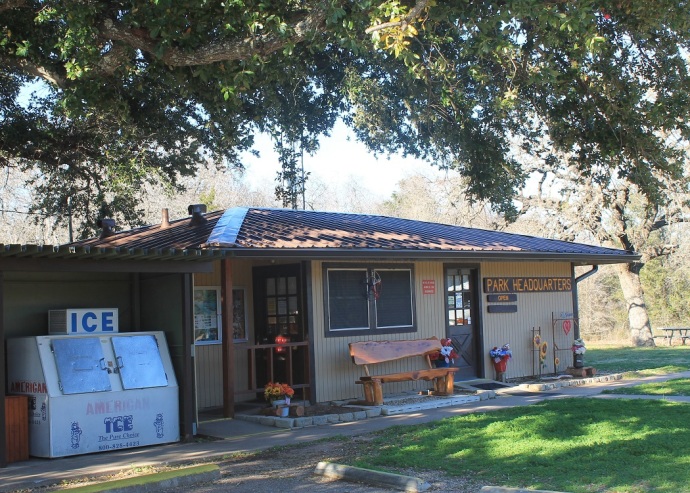Final Days: March 1 & 2
It was cold and drizzling when we woke up on Friday, but we had both slept well. After breakfast, we each had a shower; the comfort station was toasty warm, and the water was hot, though the design of the shower stalls was not good, no place to put soap or shampoo bottle except on the floor.
On our last Texas trip, we winterized the van here at Montgomery Bell because it was going to be really cold up in Ohio and Ontario. But this time, the temperature would be only around zero overnight in Ohio, then even warmer when we got home. So, after packing up, we simply added some fresh water to our tank, then went and dumped our waste water. We were on the road by 9.
Two years ago, when we left this park, we went back down to the I-40 and through Nashville to pick up the I-65 north, but we’d run into construction and heavy morning rush-hour traffic, and it took us hours. So this time, I decided we’d cut northeast from the town of White Bluff on secondary roads and catch the I-65 well north of Music City. Google Maps showed similar times for the two routes, and this way, we’d have interesting (and new) scenery and a more restful drive.
Highway 250 out of White Bluff is a narrow, winding, hilly road that would definitely have been more fun in our MGB sports car, but Fred took it all in stride. The remainder of the route was on slightly better roads, but was still very scenic. We passed through the towns of Ashland City, Pleasant View, and Springfield and got on the Interstate at White House. About 15 miles further, we crossed into Kentucky just south of Franklin (every state seems to have a Franklin).
At the turn-off to Horse Cave, we went to a Love’s truck stop to fill the propane tank. The (not-very-accurate) gauge in the van showed that we were somewhere between empty and a third of a tank, lower than we’d ever seen it. Since it was going to be pretty cold that night and we’d have to use propane for the furnace, the fridge, and hot water, I didn’t want to risk running out.
The guy who came out to serve us asked, “Where y’all from in Canada? You ever seen a moose around there?”
“We’re from Kitchener, near Toronto,” I said, “and, yeah, I’ve seen moose, but further up north, not anywhere near where we live.”
“Well, ya ever eat moose? Is it like beef or deer or what? Y’all like it?”
“It’s sort of like beef, but wilder, gamier. And, yeah, it’s OK.”
“My daughter wants to go up to Canada to hunt moose. She’s only 14, and she’s shot lots of deer, but she’d like to get a moose. I hate deer meat. Y’all like it? I give most of the deer she shoots to the Amish. So what’s your president…or premier or whatever…what’s he like? I mean like does he run your country good? You like him? So, do y’all have, like, Republicans and Democrats, or what?”
“Um, we call him the Prime Minister, and he does OK, but he’s a bit wishy-washy, some of the stuff he does is fine, but…. Well, he’s a Liberal, which is sorta like your Democrats, and there’s the Conservatives, who are like your Republicans, but then we have a third party, the New Democrats, who are left of the Liberals….”
“Ah, I bet y’all’re with those guys, am I right? Hey, do you think I talk funny. All these Canadians come down here and tell me I talk funny, but I don’t hear it. What d’y’all think?”
“Well, you definitely have an accent, to my ear, but there’s nothing funny about it. You don’t hear it because you grew up with it, it’s what you know. You probably think I talk a bit different too, right?”
“Like you say ‘eh’ and stuff, right? What’s that mean anyway, something like ‘hunh,’ hunh?”
It went on like this long after he filled the tank (“What, that’s all y’all need?”) and filled out the paper work. Finally, “Y’all have a great day, hunh, and safe drivin’!” and he was off to talk to somebody else.
I think it might have been the most interesting talk I’d had with an American on the whole journey. When I got into the van, Sande, who’d been listening to it all, was laughing her head off and telling me what I should have said in response to his political questions.
About 20 miles up the road, at Elizabethtown, we turned off on US-62 and went to Bardstown for lunch at the Talbott Tavern. Anytime we’re within a hundred miles of this place, we try to make this detour, and we were in no hurry today. Bardstown is the bourbon capital of the world, with several distilleries including Heaven Hill (the country’s largest) right in town and Jim Beam just a few miles away in Clermont (we’d visited both these places in 2016).
And the Talbott, one of our favourite pubs anywhere, is a wonderful old place that’s been in operation since the late 1700s, with a fine bar, a dining room, and accommodations, as well as a fascinating storied past. We had dinner there in 2016 and have stopped in for drinks or for lunch at least five times since. This time, Sande had a salad with a shot of Buffalo Trace bourbon for dessert, while I had shrimp and grits (the first and only on this trip) and a local IPA.
We didn’t feel like going up US-31 to Louisville, as we’d done before, so we headed northeast on the Bluegrass Parkway, then north on US-127 through Frankfort (the state capital and home of Buffalo Trace and several other distilleries) and on for another 40-odd miles to Glencoe, where we got onto the I-71. Soon, we merged with the I-75, and in Florence, we stopped to fill up with gas before we got into Ohio, where it would be more expensive.
We crossed the Ohio River into Cincinnati at about 6 o’clock and we easily found Wiedemann’s Fine Beers, Brewery, and Pub on Vine Street in the north end of the city, just blocks off the Interstate. This is another Harvest Hosts host, and we’d booked in to stay the night in their parking lot. But it was Friday night, and the little lot, in the middle of the block, behind their building, was completely full. So we maneuvered our way back out and across the street to a mall, where they’d told us we could park until there was space in their lot.
It was raining (as it had been off and on all day), so we got into our raincoats and grabbed our umbrella for the run to the front door. The bar was packed, but we managed to get a table for two near the bar. It’s a fantastic place, with photos and paintings and beer posters and paraphernalia decorating the walls, ornate cornices around the ceiling, and fairy lights strung across from wall to wall. It’s warm and noisy, and although it’s big, with a games room and a number of rooms for dining, it feels cozy. A band was setting up on a stage in the next room. Exactly the sort of place you’d want for a local.
Sande ordered a pint of Kolsch and a beef dip sandwich with salad and I had a schnitzel sandwich with fries and their east coast IPA . We let the friendly but efficient waitress know that we were Harvest Host guests so that we wouldn’t get in trouble as a “no-show.” The food was good and the beer excellent, so tasty that Sande was talked into another half, while I needed no such encouragement to have another pint. We did some crowd-watching and listened to a few songs from the band while we finished our drinks, then paid up and went to check the parking lot.
There were still no suitable places to park up for the night, so we went across the street, moved Fred to a more sheltered place in the mall lot, and set up the bed and got things ready for the night. The restaurant closes at 11, but it was already thinning out a bit, so I thought we could check again in a little while, and if there still wasn’t a good spot, we could just park where we were for the night. We read until 9:30, then drove over into Wiedemann’s lot and found a great spot right against the back fence.
Once we were settled, we turned out the lights, put in our ear-plugs, and went to sleep. We didn’t hear a thing all night. This great night’s sleep at a fine brewpub on our final night provided a nice symmetry with our first night of the trip, when we stayed at Triton Brewing Co in Indianapolis, just 110 miles west of here.
I woke up at 5:30 to pee and, having had almost 8 hours sleep, couldn’t get back to sleep. When I got up to read, Sande suggested we head out so as to avoid morning traffic. We didn’t even bother with breakfast, just packed it all up and set out. We figured we’d stop at a Waffle House, a ritual we hadn’t yet indulged on this trip; I was pretty sure there was one not far up the highway, where we’d stopped on another trip, another morning when we got up too early.
When we stopped to turn left onto Vine Street, a US Postal Services truck went by, but that was one of the very few other vehicles we encountered until we got onto the Interstate. We had to follow Vine Street a couple of miles up to Township Road before we could get across to a highway entrance. We passed through an industrial area (which is what you see from the I-75), but then entered an old working-class residential neighbourhood, called Elmwood Place.
There were old tall, narrow, brick houses with fancy cornices that are quintessentially Cincinnati, mixed with frame cottages, corner grocery stores, and little pubs. The empty, misty side streets were eerily attractive, but sadly, it was still too dark to take photos. I think we’ll have to explore the place more the next time we’re passing this way.
A few miles up the Interstate, we pulled off to find the Waffle House, which was right where I thought it should be. The place was bustling, and there was only one other white person there. We really enjoy the open kitchens in these places, with the wait staff calling out orders and bickering with the people working the grill. Sande got her usual pecan waffle and I ordered a bacon-and-egg sandwich on wheat toast. Apparently, the grill guy forgot about my order, but it was fun to watch them hurrying to get it done, glancing at me nervously and quietly blaming each other for messing up. The bill was less than $20, and we left smiling and ready for the road.
Then it was mile after mile through the flat, flat Ohio plain. Sande drove all the way, through Dayton and Lima and Findlay and Bowling Green and Toledo, stopping only once at a rest area. It was a dreary day again, and I worked on writing another blog post as we motored along, so there are few photographs.
At Monroe, Michigan, we stopped to fill up the tank with that cheap American gas for the last time. I took over the wheel to drive through Detroit and across the river-border in the tunnel. Once again, the crossing was quick and painless, the border guard asking us only a few questions about how long we’d been away, how much we’d spent, and whether we had any alcohol or tobacco.
It was just after noon when I pulled over in Windsor to let Sande drive again. We thought about stopping at either the Sons of Kent Brewery in Chatham or the Brickhouse Brewpub in Woodstock for lunch, but decided instead to share the remains of Sande’s beef sandwich from the previous night and just kept driving. We were home shortly after three.



